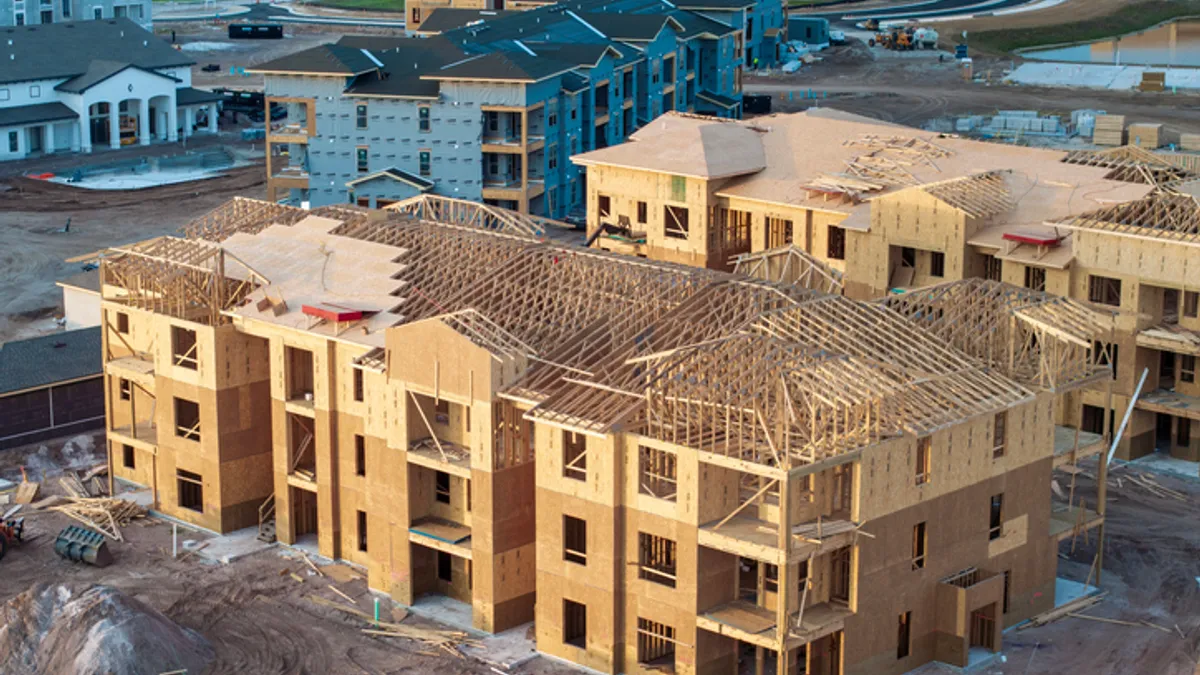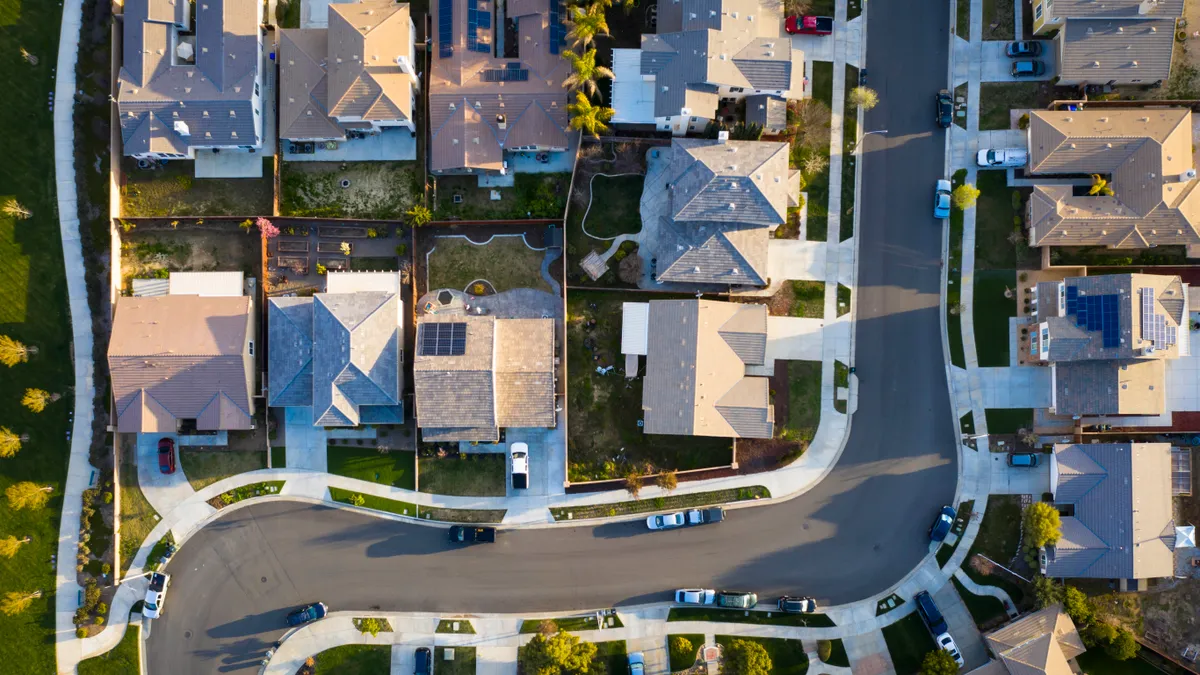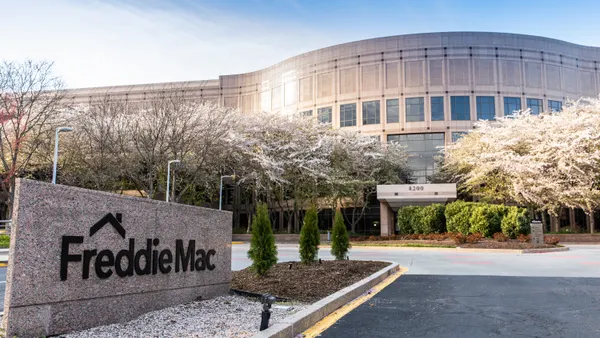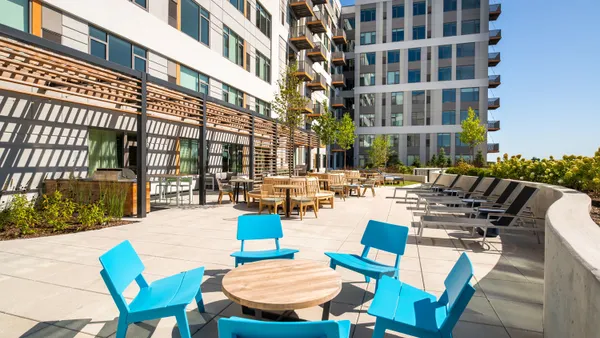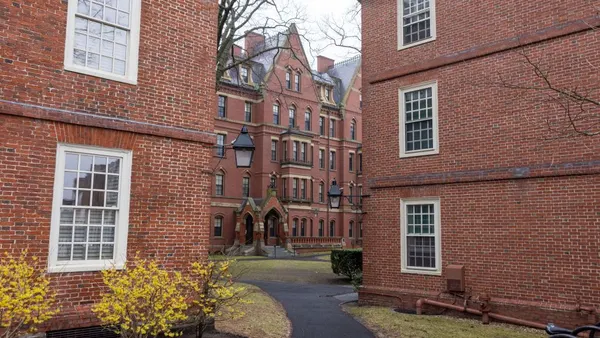Dive Brief:
- The time it took to build the average apartment property in 2024 was 19.6 months, about 0.3 months less than the year before, according to the National Association of Home Builders’ analysis of the 2024 Survey of Construction from the Census Bureau.
- The Northeast posted the longest construction timeline at 23.4 months. The West, at 19.9 months, and the South, at 18.5 months, followed. The Midwest had the shortest permit-to-completion period at 17.3 months.
- In the analysis of the data, NAHB Principal Economist Na Zhao, Ph.D., said that a “modest decline occurred despite the industry continuing to grapple with a shortage of skilled labor.” However, Zhao noted that construction timelines remain lengthy.
Dive Insight:
Buildings with 20 or more units took 22.1 months to complete after obtaining authorization in 2024, while those with 10 to 19 units were finished in 19.2 months and those with 5 to 9 averaged 19.1 months. The small buildings, those with 2 to 4 units, averaged 15.3 months.
Two- to four-unit buildings saw the only real drop in construction timelines, with a decline of 2.3 months to build. Ryan Davis, CEO of Dallas-based consulting firm Witten Advisors, told Multifamily Dive in emailed comments that labor becoming more available might play a role in the faster turnarounds.
“Labor is also becoming more efficient, getting more experience,” Davis said.
NAHB Chief Economist Robert Dietz told Multifamily Dive the decline was a “promising sign for missing middle production.”
However, other building sizes saw increases. Ten- to 19-unit buildings took 2.3 more months to complete, and 5- to 9-unit buildings required 2.2 more months to complete than in 2023. Buildings with 20 or more units only took an extra 0.1 month to complete.
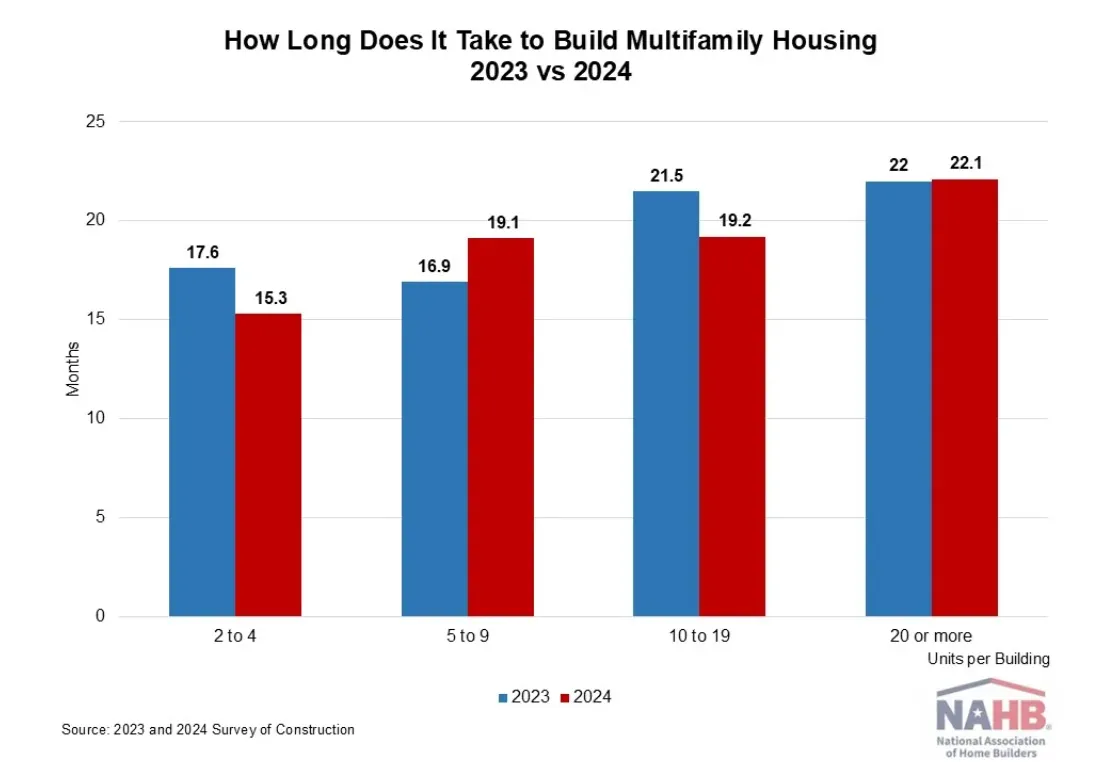
Construction timelines that remained flat in larger projects could be considered a win, given that timeframes rose in the years following the pandemic.
Davis said he thinks a rise in less-intensive suburban construction could lead to quicker turnarounds.
“More deals [have] started in suburban areas, or smaller metros in recent years, and those are typically garden, which have a shorter time frame,” he said.
Click here to sign up to receive multifamily and apartment news like this article in your inbox every weekday.


